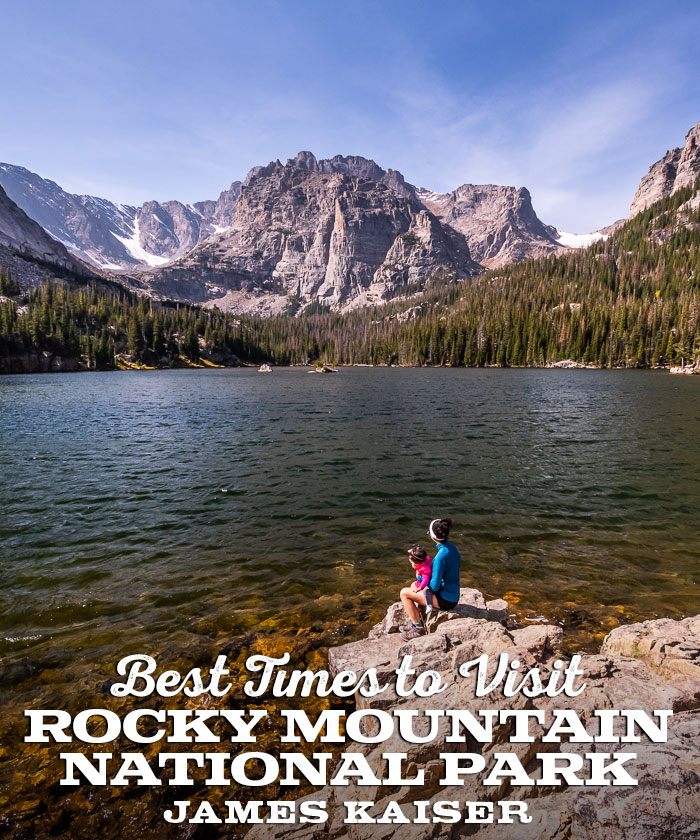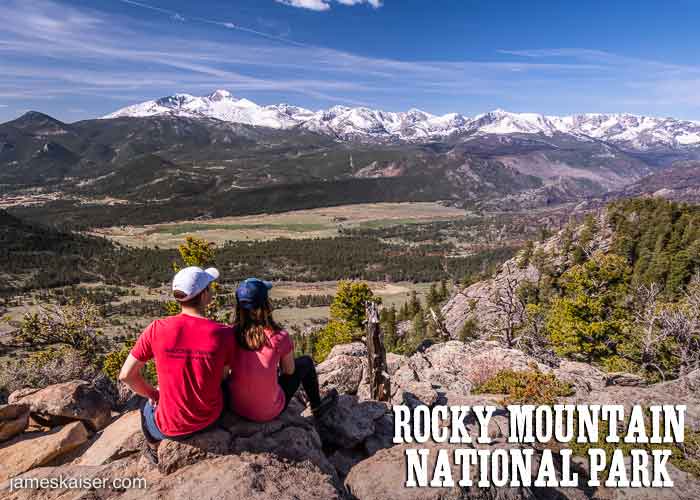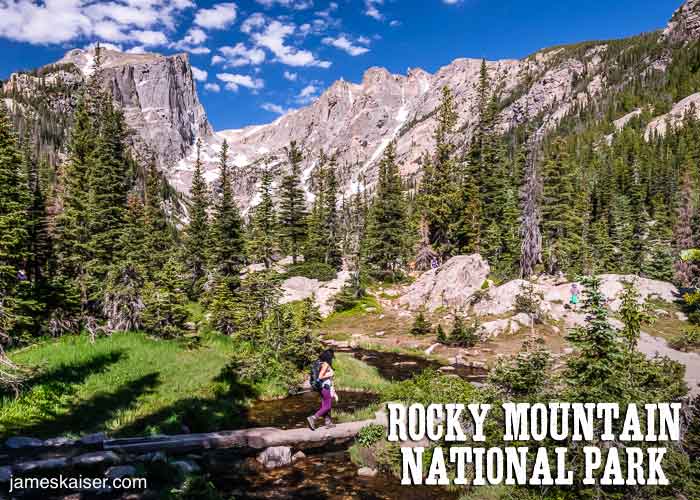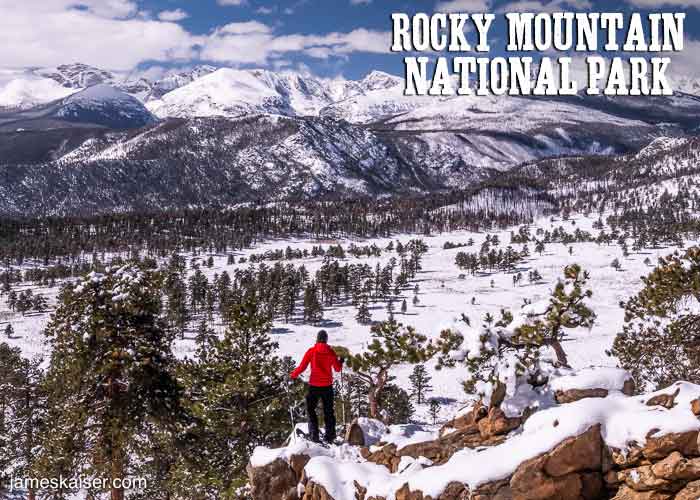
The best time to visit Rocky Mountain National Park depends on what you’re looking for.
Want reduced crowds and snow-capped peaks? May is a great time to visit.
Looking for balmy temperatures and terrific high-altitude hiking? July and August can’t be beat.
Interested in glorious autumn foliage? Late September and early October are when the aspen peak.
And although winter is often overlooked, the park is absolutely magical after a fresh layer of snow.

Discover the best
of Rocky Mountain National Park

National Outdoor Book Award winner.

Spring (April, May, June)
Conditions in spring are highly variable, often fluctuating between warm, cold, wet, and dry. Much depends on winter snowfall, which can keep roads closed and trails icy/muddy into late spring.
Elevation also plays a significant role. Spring first arrives at lower elevations (8,000–9,500 feet), often bringing warmer temperatures and beautiful wildflowers by May. Higher elevations often remain snowy and soggy during this time.
Spring then migrates to subalpine country (9,500 to 11,500 feet) in late May/early June. Trail Ridge Road often opens in late May, but following snowy winters it can stay closed until June.

Summer (June, July, August)
Summer is the park’s most popular season. You can drive or hike to the park’s highest elevations, enjoying balmy temperatures during the day. But summer also brings big crowds. Permits are required to enter Rocky Mountain National Park during peak summer hours, which helps alleviate crowds. But you’ll want to purchase permits as soon as they become available. Rocky Mountain National Park timed-entry permits are available at recreation.gov.
Summer also brings frequent thunderstorms. During monsoon season (July, August), afternoon thunderstorms roll through the mountains nearly every day. Blue skies can fill with dark clouds in under an hour, so always pack rain gear.
Wildflowers bloom in alpine tundra from late June to early August. The park’s highest elevations experience a season most accurately called “non-winter” from early June to mid-September.
Always be aware that conditions can change rapidly. At Alpine Visitor Center, located on Trail Ridge Road 11,796 feet above sea level, it can snow any day of the year.

Fall (September, October, November)
Fall is my favorite season in the park. The weather is glorious: warm, sunny days in early September turning to crisp, sunny days by early October. In mid-September, golden aspen light up the mountains, with foliage generally peaking in early October.
September is also the start of the annual elk rut, when the haunting bugle of dominant bulls echoes through the park. Not surprisingly, September is one of the park’s most popular months. In terms of total visitation, September is comparable to July and August, but visitation is 50 percent higher on September weekends.
By mid-October, leaves, temperatures, and visitation numbers all drop in unison. By late October, Trail Ridge Road usually closes for the season.

Winter (December, January, February, March)
Temperatures and visitation numbers plummet in winter—which is why some people love visiting park during this time.
In addition to breathtaking snow-capped mountains, there’s great snowshoeing and cross-country skiing. Sledding is only allowed at Hidden Valley. Hardcore adventure junkies enjoy backcountry skiing, winter mountaineering, and ice climbing.
There’s often snow on the ground by December, but January, February, and March are generally the snowiest months. Avalanches are common in winter, and avalanche training is recommended for anyone spending time in the backcountry. Note: Although overall winter visitation is relatively low, weekends and holidays can be busy.

Discover the best
of Rocky Mountain National Park

National Outdoor Book Award winner.